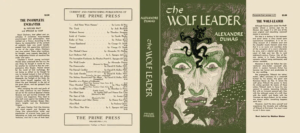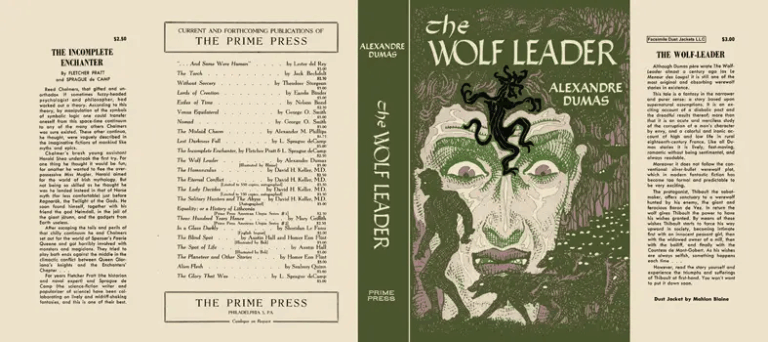There’s a tale by this title in Andrew Lang’s The Blue Fairy Book, and that’s closely related to the tale “The Fisherman and His Wife” collected by the Brothers Grimm. It’s also sometimes known as “The Enchanted Fish”. This tale however is a different one, collected by Joseph Jacobs in English Fairy Tales (1890). Its origin seems to be Scottish, and Jacob’s source was an Appendix in Notes on the Folk-Lore of Northern Counties of England and the Borders by William Henderson (1886). According to this source, the Appendix was written by Reverend Sabine Baring-Gould, an eccentric savant who claimed the story dated back to the XVI Century. The Cruel Knight And the Fortunate Farmer’s Daughter is the probable source for this tale: a ballad where it’s said that the girl was born around 1619.
Here’s what’s the story about. You can also read it on my Patreon.
In the rugged lands of the North Country, where the winds whispered tales of old through ancient forests and desolate moors, there lived a mighty baron known throughout the land as a man of great power and even greater knowledge. He was said to possess the ability to gaze into the very threads of destiny, unravelling the secrets of what was yet to come. In the solitude of his chamber, surrounded by the shadows of candlelight, the baron would often peruse the pages of the mysterious Book of Fate, a tome of esoteric knowledge and prophecies.
One fateful day, as the morning mist still clung to the earth and his young son played innocently in the castle courtyard, the baron felt a chill of foreboding. Compelled, he consulted the Book of Fate to divine the future of his cherished heir. To his utter dismay, the revelations were not what he desired; the pages whispered of a union between his noble son and a maid of lowly birth—a child who had only just been born beneath the shadow of York Minster. Her father was the poorest of men, burdened with five children already, each vying for the meagre sustenance his labour could provide.
Determined to alter the course set by fate itself, the baron summoned his horse and rode to the city of York. Upon arriving, he sought the humble dwelling of the maid’s family. There, seated in despair by his doorstep, was the maid’s father, his shoulders slumped beneath the weight of his struggles. The baron dismounted, approached the man and inquired, feigning compassion, “What troubles you, my good man?”
The man replied, “Your honour, I am at my wit’s end. Five children I have, and now a sixth, a little lass, has entered this world. But where shall I find the bread to fill their hungry mouths? That I cannot say.”
The baron, seizing the opportunity, offered solace. “Despair not, for I can ease your burden. I shall take the last little one, and you need not trouble yourself further.”
Grateful, the man thanked the baron and brought forth his newborn daughter, entrusting her to the nobleman’s care. The baron, mounting his steed again, rode away with the child and steeled his heart against any possible compassion.
As the river Ouse flowed beneath the pale light of dawn, the baron paused upon its banks. With a heart as cold as the waters, he cast the child into the depths, believing he had thwarted destiny.
The river, however, cradled the infant in its gentle embrace. The child’s garments buoyed her upon the currents, guiding her toward a humble fisherman’s hut nestled by the river’s edge.
There, the fisherman, a man of simple heart and honest labour, discovered the babe as her soft wailes mingled with the rustle of reeds. Moved by compassion, he took her into his home as the daughter he never had, and there she grew in grace and beauty, a child of the river and the wild. Years passed, and the girl blossomed into a young woman of surpassing beauty and strong spirit. She spent her days helping her father and tending to his house with a joyful heart.
One fateful day, however, the baron and his retinue set forth on a hunting expedition along the banks of the Ouse. Thirsty from their sports, they eventually stopped at the fisherman’s hut, seeking refreshment, and the girl came out of the house to offer them water. Her beauty immediately captivated the attention of the whole group, and one among the company jested with the baron: “You who read the threads of fate, Baron, tell us, whom shall this maiden wed?”.
The baron replied with disdain. “Some simple yokel, no doubt. But let us indulge in this game, if you wish. Come here, girl, and tell me the day of your birth.”
The girl responded, “Sir, I know not the day of my birth, for I was found by this very river some fifteen years ago.”
Realization dawned upon the baron, and when they went away, he rode back and said to the girl: “Hark ye, girl, I shall see to your fortune. Take this letter to my brother in Scarborough, and your future shall be secured.”
He wasn’t lying. The girl, unsuspecting, accepted the letter with gratitude and set forth on her journey, but this is what he had written inside:
‘DEAR BROTHER,–Seize the bearer and put her to death immediately.
Yours affectionately,
HUMPHREY.’
As fate would have it, the path she tread was fraught with danger, and a band of robbers seized her by the inn where she was spending the night. Finding naught but the letter upon her, they read its cruel contents and were either moved by pity or by disdain for the noble’s villainy. They resolved to alter its course. The captain of the robbers took a pen and paper and wrote this letter:
‘DEAR BROTHER,–Take the bearer and marry her to my son immediately.
Yours affectionately,
HUMPHREY.’
Then they gave it back to the girl, without saying they had altered its content, and let her free to continue her journey.
With the forged missive, the girl continued to Scarborough, unaware of the plot. Upon her arrival, she presented the letter to the baron’s brother, a noble knight of honourable bearing who dutifully arranged for the marriage to his nephew.
Soon after, the Baron himself came to his brother’s castle, and what was his surprise to find the very thing he had plotted against had come to pass.
Yet, the baron, consumed by rage, refused to concede to fate.
Feigning happiness, he invited the girl on a walk along the perilous cliffs overlooking the roaring sea. In that lonely expanse, he grabbed her by the arm and intended to cast her into the fathoms below.
But the innocent girl pleaded for her life. “I have done no wrong,” she implored, “If you spare me, I shall abide by your wishes, and I shall not lay eyes upon you or your son until you desire it.”
The baron relented, but not without a binding challenge. He removed a gold ring from his finger and hurled it into the sea, declaring, “Never let me see your face until you can present me with this ring.” With that, he released her to wander the world alone.
Lost and adrift, the girl travelled the lands until she found herself at the gates of a great noble’s castle. There, she sought refuge and offered her labour in exchange for shelter. Her hands, accustomed to hard work from her life with the fisherman, took readily to the tasks of a scullion girl.
Time flowed like a river. One day, as she laboured in the noble’s kitchen, she froze at a sight that made her heart quicken—her husband, the baron’s son, accompanied by his father and uncle, had come to visit the great house.
Her spirit trembled with hope and trepidation, for she dared not reveal herself lest the baron’s wrath be rekindled. Retreating to the shadows of the scullery, she focused on her task to prepare a grand fish for the noble’s feast.
As her hands worked deftly, a glint of something unexpected caught her eye. Within the belly of the fish lay the baron’s ring, the very one he had cast into the sea.
With the meal prepared and presented, the noble guests marvelled at the dish’s quality and flavour. Their curiosity piqued, they summoned the cook and ordered her to reveal herself.
As she stepped into the light of the grand hall, the enraged baron rose from his seat. Yet the girl approached the table and laid before him the golden ring, gleaming in the candlelight.
In that moment, the baron recognized the folly of resisting destiny.
At last, the baron extended his hand to the girl, granting her a place of honour beside her husband, and he declared to all present that she was indeed his son’s rightful wife. And he took her and his son home to his castle, and they all lived happily as could be.
Here are Jacobs’ notes on the original story.
SOURCE Henderson, l.c., p. 326, from a communication by the Rev. S. Baring-Gould. There is a similar legend told of Stepney Church.
PARALLELS ‘Jonah rings’ have been put together by Mr Clouston in his Popular Tales, i, 398, etc.; the most famous are those of Polycrates, of Solomon, and the Sanskrit drama of Sakuntala, the plot of which turns upon such a ring. ‘Letters to kill bearer’ have been traced from Homer downwards by Prof. Köhler on Gonzenbach, ii, 220, and ‘the substituted letter’ by the same authority in 0cc. u. Or., ii, 289. Mr Baring-Gould, who was one of the pioneers of the study of folk-tales in this country, has given a large number of instances of ‘the preordained marriage’ in folk-tales in Henderson, l.c.
REMARKS The tale is the feminine form of the legend of “The Man Born to be King,” familiar to us from Mr Morris’s setting in his Earthly Paradise. He derived this from Nouvelles Françoises du Treizième Siècle, which he has himself translated under the title Old French Romances. In my introduction to his translation I have pointed out that this particular romance has a Byzantine source, an Ethiopic version of which has recently been discovered by Dr E. Kuhn. The story is, indeed, told under the title of Constant the Emperor as a sort of folk etymology of the name Constantinople. It seems probable that the tale was thus brought from Byzantium to France and England and became localised in different forms at Stepney and York. Curiously enough, the letter to ‘kill bearer’ is found in India, and is, of course, familiar from the Iliad. But whatever its ultimate source, there can be little doubt that this tale is more immediately derived from the Byzantine Romance of the Emperor Constant.
The beautiful ring in the header is by Melissa Chen.










No Comments